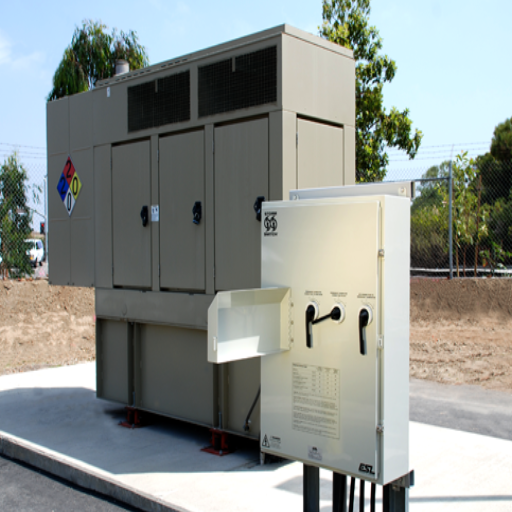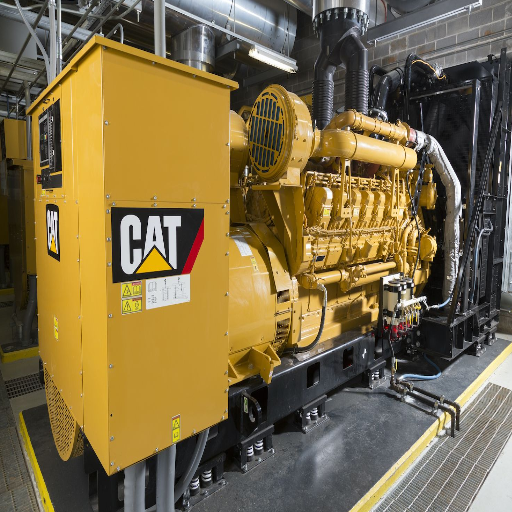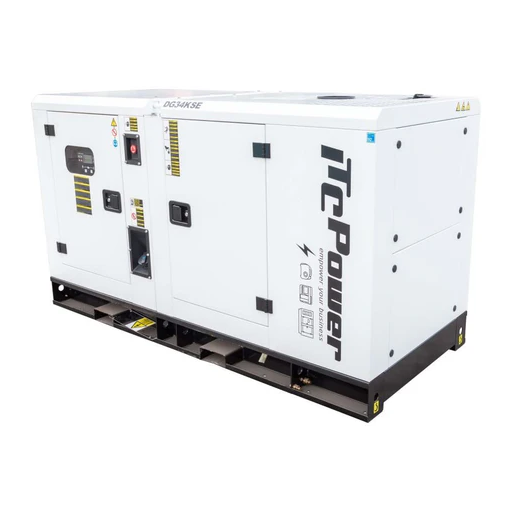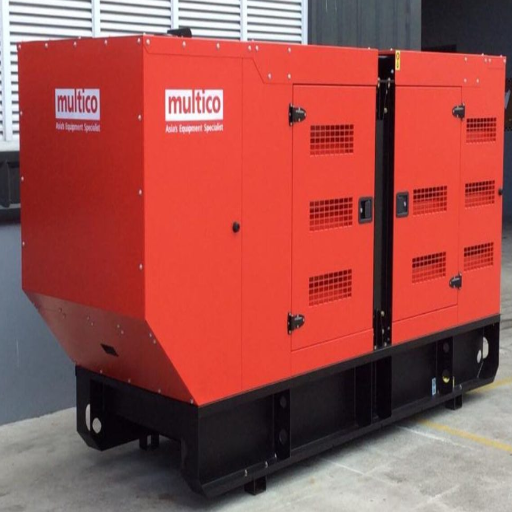Can emergency power be in the same room as normal power? Imagine the events of an emergency coming into play-disasters, power cuts, emergency clearing-out of a situation, and so on. The paramount need here is a reliable power supply to establish continuity in an otherwise chaotic environment. Emergency and standby power supplies are the potential leads ensuring smooth operations of businesses when the primary power source fails. From ensuring a hospital’s life support systems remain active to safeguarding vital information in a data outage, their importance in infrastructure is paramount. This article will explore the ultimate requisites of the emergency and standby power systems, discussing their significance, fundamental components, and reliability considerations. If you plan to maintain or implement any such systems, this guide will prepare you better in the face of uncertainty.
Understanding Power Systems

Emergency and standby systems comprise several significant components that provide reliable power during outages. Typically, these components include the following:
- Power Source: Generators or backup battery systems configured to switch on whenever the primary power is gone.
- Transfer Switch: Ensures smooth transfer between the primary and backup power sources.
- Control Panel: This controls the system’s operation, offering monitoring and control functions to ensure proper reliability.
- Power Distribution System: Carries the power from the backup source to the load.
Understanding these basic components enables an operator to design systems that will work when they are most needed.
Definition of Power Systems
Power systems are networks and mechanisms created to generate electricity and transmit and distribute it from the source to the end users. These systems consist of often interconnected components like generators, transformers, transmission lines, and distribution systems, which ensure the safe and reliable supply of electrical energy. Modern power systems use new technologies such as the smart grid and integration of renewable energy to improve energy efficiency and sustainability. They are key in facilitating industrial, commercial, and household activity, making them essential for day-to-day infrastructure.
Types of Power Systems
In terms of power systems, traditional electrical grids, decentralized grids, off-grid systems, hybrid systems, and smart grids are now used. Summary forms of basic points are presented in a table as such:
|
Type |
Description |
Key Feature |
|---|---|---|
|
Traditional Grid |
Centralized power supply |
Large-scale distribution |
|
Decentralized Grid |
Localized microgrids |
Operates independently |
|
Off-Grid |
Self-reliant systems |
No grid connection |
|
Hybrid |
Combines energy sources |
Enhanced reliability |
|
Smart Grid |
Digitalized grid |
Real-time monitoring |
Importance of Emergency Power Systems
A backup power system safeguards the critical facilities during unforeseen emergencies or natural disasters. Such systems provide a reliable backup power source to prevent life safety and operational disruptions. These emergency power systems, therefore, are of the utmost importance in situations requiring, e.g., hospitals, data centers, or emergency response centers, where lives may be at stake or costly operational disruptions may occur. Contemporary emergency power systems incorporate the latest technology, including battery storage, generator sets, or renewable energy sources, providing immediacy and energy efficiency. This increases resilience, reduces downtime, and promotes recovery during times of emergency.
Emergency Power Supply Systems

An emergency power supply provides power when the primary source has failed. Usually, such systems include the following essential components:
- Power Source—In case of a power outage, backup power may come from a generator, battery bank, or renewable energy system.
- Automatic Transfer Switch (ATS) offers an instantaneous changeover from normal utility power to backup source.
- UPS – The uninterruptible power supply gives immediate short-term power to bring the backup system online.
- Control Panel—This controls and monitors the emergency power system to ensure its most efficient and reliable performance.
Components of Emergency Power Supply
Keep in mind that the components of an emergency power supply system do not operate in isolation but rather use contemporary and modern technology to maximize performance. Having considered some new-age features such as IoT-based monitoring systems and AI-based predictive maintenance, these systems can stand up to guarantee more reliability and efficiency. Energy storage advancements, particularly in lithium-ion batteries, have greatly enhanced the ability of UPS systems to sustain power longer during outages. Then come the smart control panels that offer real-time data tracking and remote management; such features allow the operators to act before a failure occurs. Supported by these new-age developments, today’s emergency power supply systems stand better in supporting critical infrastructure in a fast-paced, tech-oriented world.
Types of Emergency Power Supply Systems
Emergency power supply systems consist of systems for emergencies, legally required standby systems, optional standby systems, and critical operations power systems.
| Type | Code | Purpose | Response | Examples |
|---|---|---|---|---|
| Emergency | NEC 700 | Life safety | ≤10 sec | Fire alarms, exits |
| Legally Req. | NEC 701 | Hazard control | ≤60 sec | Ventilation, pumps |
| Optional | NEC 702 | Business critical | Manual/Auto | Business systems |
| Critical Ops. | NEC 708 | National security | Stringent | Police, data ctrs |
Specific Requirements for Emergency Power Supply
Emergency power supply systems must meet more stringent requirements to qualify as safe, dependable, and efficient during critical incidents. First, these emergency power supply systems must offer uninterrupted power with the least possible switching time, particularly for hospitals, data centers, and industrial applications. The systems should be able to supply power to loads varying in demand while keeping quality intact. Complying with safety standards that ensure the safety and reliability of operations, such as NFPA 110 or IEC 62040, is considered a must. The system must have advanced monitoring and diagnostic systems that track real-time performance and plan timely maintenance. Also, the systems need to be scalable to adapt as energy requirements grow or take an opposite turn. By restricting their parameters to these specifications, emergency power supplies never cease to remain sturdy and dependable in any unforeseen situation.
Standby Power Systems

Standby power systems are backup power supplies that supply power during an outage or interruption in the primary electricity supply. Such systems are generators or UPSs capable of switching on automatically to interrupt certain operations. They find use in hospitals, data centers, and industrial plants where a continuous power supply is essential for safety and efficiency. Therefore, constant maintenance and testing of these systems guarantee their working whenever needed.
Overview of Standby Power Systems
Standby power systems ensure operational continuity in different scenarios. Technology enhancements, however, have provided such modern-day standby power systems with features like remote monitoring, efficient energy consumption, and a shorter response time. Keeping abreast of demand, the market for standby power systems was evaluated at about $20 billion in 2022 and is expected to witness a CAGR of more than 5% till 2030. This growth is based on the rising need to prevent power interruptions from natural disasters and aging infrastructure.
New hybrid systems merge conventional fuel generators with renewable energy generation facilities, such as solar power, for greater sustainability and economic benefits. Further, IoT considerations allow for real-time monitoring and predictive maintenance to minimize downtime and maximize reliability. Standby power systems are vital for data centers, where huge financial penalties are incurred in just a few seconds of downtime.
Installing and operating standby power systems according to standards is vital to ensuring safety and efficiency. Standards are provided by institutions such as the National Fire Protection Association (NFPA) and the International Electrotechnical Commission (IEC). Regular load testing and satisfactory fuel management further call for a systematic approach to properly managing the entire system.
Applications of Standby Power Systems
Standby power systems have become an essential element that keeps various industries working and operational during interruptions to utility power. Now, some of the critical uses of standby power systems are:
- Healthcare Sites
Hospitals, clinics, and other medical facilities require standby power to keep life-saving equipment, lighting, and other crucial systems running during a power outage. For example, uninterrupted power is necessary for operating theaters and intensive care units.
- Data Centers
As they become increasingly digital-centric, data centers depend on standby power systems to keep servers safe from data loss and provide millions of users across the globe with uninterrupted power in the event of utility failure.
- Manufacturing Industry
Standby power systems serve factories and production lines to prevent costly downtime and preserve operational efficiency. Unplanned outages could lead to severe production delays and waste.
- Telecommunications
Telecommunications, including mobile networks and Internet services, must be available consistently. Aire standby power to uphold the continuity of services for consumers and businesses, particularly in emergencies.
- Retail and Commercial Buildings
Standby power systems are essential for shopping malls, supermarkets, and office buildings to maintain basic services such as security systems, lighting, and refrigeration during power outages, thereby preventing losses and safeguarding safety.
Maintenance and Compliance for Standby Systems
Standby power systems must undergo proper maintenance to be reliable and efficient. Regular inspection and testing are essential so potential problems can be caught early on and prevented from becoming full-blown issues. Complete checks and services are required on storage batteries, fuel systems, and control panels on a set schedule to achieve the best performance.
Complying with equivalent local, national, and international standards is perhaps the most important aspect. For example, the NFPA or ISO standards ensure that standby systems are safe in their activities. Recordkeeping and audit schedules, in addition to staying updated with the latest changes in rules and regulations, also help maintain such compliance.
If maintenance or compliance is compromised, the system will fail at critical instances, leading to disruptions or potential hazards. Hence, ironically, having a standby power setup demands delivery of proper and periodic maintenance along with an awareness of applicable compliances.
Designing Emergency and Standby Systems

Reliability, scalability, and compliance with the associated standards are paramount when creating emergency and standby power systems. Upon evaluation of the facility’s power needs, including critical systems and equipment expected to remain energized during a power outage, generators, transfer switches, and UPS should be selected that are adequately sized and compatible with the facility’s infrastructure. The system layout should help mitigate downtime by providing easy maintenance and testing. Compliance with local codes and industry standards, such as NFPA 110 and IEEE, is critical to ensuring safety and performance. The design should be well planned with the future in mind, allowing flexibility for expansions toward long-term operational resilience.
Key Considerations for Design
Designing critical power systems must merge modern technology with proven sources of information. Updated findings from public sources, such as Google’s search engine, can reflect trending industry issues, new technologies, and best practices. If energy storage with lithium-ion batteries is being considered, or the integration of renewables is contemplated to keep the solutions sustainable yet reliable, the process shows its value. Research on specific questions or challenges will bring to light configurations, materials, and methods most suitable to the facility’s operational needs. The system is thereby fitted with the data to remain efficient, scalable, and resilient against future requirements.
Integration with Existing Power Systems
Integrating a new energy storage solution into an existing power system requires detailed planning, cutting-edge technologies, and a clear understanding of system compatibility. Modern facilities often depend on hybrid systems that combine renewable energy sources such as solar or wind with the conventional grid to improve energy efficiency and reliability. Recently, one method involved an innovative inverter, which seamlessly integrates storage into existing grid infrastructure to allow a smooth two-way flow of energy and stability.
Today, renewable energy integration is possible in about 70% of energy systems worldwide with the aid of automated energy management software, real-time grid monitoring tools, etc. These tools employ predictive analytics to analyze and forecast energy demand and direct storage accordingly. For example, studies have established that using battery storage together with solar power generation in facilities results in a maximum of 25% improvement in energy efficiency on average, reducing wastage and peak load problems.
Further opportunities for integration are presented by collaborative microgrid systems, allowing decentralized energy trades, improving resilience to outages, and cost optimization. Ensuring compatibility through standards such as IEEE 1547 for grid interconnectivity and utility-grade SCADA (Supervisory Control and Data Acquisition) systems will further ease this integration. It creates a robust architecture that can be swiftly retasked with changing demands and the ongoing evolution of energy technologies.
Reference Sources
- Enhancing the reliance of emergency power supply systems for nuclear facilities using hybrid system
- Authors: Mohammed Saade, Hussein El-Eissawi, Adel S. Nada
- Publication Date: 2025-02-01
- Summary: This paper discusses the importance of reliable emergency power supply systems in nuclear facilities, particularly during grid outages. It highlights the challenges associated with diesel generators and proposes a hybrid system incorporating photovoltaic (PV) systems and batteries to enhance reliability. The study emphasizes the need for careful design and integration of emergency power systems to ensure they can operate effectively alongside standard power systems.
- Methodology: The authors conducted load flow and transient stability analysis to compare the proposed hybrid system’s robustness and performance to traditional methods.
- Seismic Assessment of Electrical Equipment in Power Substations: A Case Study for Circuit Breakers
- Authors: K. Kaatsız, F. S. Alici, M. Erberik
- Publication Date: 2024-03-01
- Summary: This study focuses on the seismic safety of electrical equipment in power substations, which includes considerations for emergency power systems. It discusses the importance of ensuring that standard and emergency power systems can withstand seismic events without failure, which is critical for maintaining safety and operational integrity.
- Methodology: The authors performed seismic assessments of circuit breakers and other electrical equipment, evaluating their performance under simulated seismic conditions.
Frequently Asked Questions (FAQs)
Can backup power systems be in the same room as usual power sources?
Yes, backup power systems can be located in the same room as normal power sources, but specific regulations must be followed to ensure safety and compliance with the National Electrical Code (NEC) and NFPA 70. Proper separation and protection measures should be implemented to prevent interference and ensure that both systems operate effectively.
What types of emergency power systems are used for emergencies?
Emergency power systems typically include emergency generators and optional standby systems. These systems are designed to automatically supply power to critical loads when the primary power supply is lost, ensuring that essential services such as emergency lighting and fire alarm systems remain operational.
What is the difference between normal power and emergency power?
Normal power refers to the regular electricity supply used for everyday operations in a building. In contrast, emergency power is specifically designed to provide backup power for critical systems during a power outage. Emergency power systems are often tied to legally required standby systems that ensure safety and compliance with fire and life safety codes.
Are there any legal requirements for emergency power systems?
Yes, there are various legal requirements for emergency power systems, as outlined in NFPA 101 and other standards. These requirements ensure that emergency systems can provide power to essential equipment and systems, such as fire alarm systems and emergency lighting, within specified time frames.
How quickly must emergency power systems activate during a power outage?
Emergency power systems shall activate within specific time frames depending on their classification. Level 1 systems are required to supply power within 10 seconds, while Level 2 systems must supply power within 60 seconds. This rapid response is crucial for maintaining safety in emergencies.
Can emergency power systems supply power to all loads?
Emergency power systems are intended to supply power to selected critical loads for safety and operations, such as emergency lighting, control power, and illumination essential for evacuation. The selection of loads depends on the building’s design and the requirements outlined in applicable codes.
What is meant by ‘legally required standby power’?
Legally required standby power refers to systems mandated by building codes to provide backup power for specific life safety and fire protection systems. These systems ensure that essential services operate during power outages, protecting occupants and property.
How do you determine the appropriate backup power system for a building?
Determining the appropriate backup power system involves assessing the building’s power needs, understanding the types of emergency and standby systems required by code, and evaluating the critical loads that must remain powered during an outage. Consulting with a licensed electrician or a power systems engineer is recommended to ensure compliance with all regulations.
